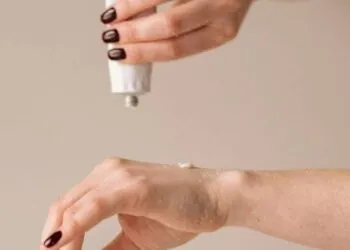If you’re struggling with substance abuse or alcohol addiction, you may have heard about the 12 steps of AA. This structured approach has helped millions achieve personal recovery by offering a clear path to overcoming addiction.
Whether you are considering recovery programs or exploring peer support groups, understanding the twelve steps can be life-changing.
This guide will walk you through the foundation of alcoholics anonymous AA, break down the twelve steps, and show you how they can serve as powerful tools for lasting recovery from substance abuse and other addictions.
The Origins of Alcoholics Anonymous (AA)
Bill Wilson and Dr. Bob Smith founded AA in 1935, drawing their inspiration for the twelve steps from the Oxford Group. The primary purpose of the twelve-step model is to help AA members stop drinking, repair damage caused by their addiction, and live by spiritual principles.
AA isn’t tied to any one faith tradition. The Twelve Steps encourage members to rely on a power greater than themselves, however they choose to define it. You are not required to follow any particular religion; instead, you’re encouraged to cultivate your own concept of a higher power. This personal spiritual connection is central to the foundation of the AA program.
While AA groups are autonomous, they often create service boards and committees directly responsible for organizing events, outreach, and AA literature distribution. Groups are fully self-supporting, declining outside contributions to preserve independence.
Although initially designed for alcohol addiction, the twelve-step model has been adopted by other groups, including Narcotics Anonymous, Gamblers Anonymous, and even secular organizations that remove religious language but maintain the core principles.
Understanding the 12 Steps Of AA
The twelve steps are built on spiritual growth, self-reflection, and making amends. Below are the steps for overcoming addiction:
Step 1: Admitted We Were Powerless Over Alcohol, That Our Lives Had Become Unmanageable
The first step is about acknowledging that your drinking problem has taken control over your life. Admitting powerlessness is about recognizing that personal recovery depends on surrendering control; it’s not about weakness.
Step 2: Came to Believe That a Power Greater Than Ourselves Could Restore Us to Sanity
Here, you open yourself to a higher power; whether that’s God, nature, or the support of AA. The goal is to trust that something beyond our own understanding can help heal us.
Step 3: Made a Decision to Turn Our Will Over to God
In the third step, you choose to surrender your will and your life to the care of a higher power, as you understand it. This surrender isn’t about giving up but about aligning your actions with a spiritual awakening.
Step 4: Made a Searching and Fearless Moral Inventory of Ourselves
Here, you write down resentment, fears, and behaviors tied to your addiction. This personal inventory, though challenging, helps you uncover patterns that fuel alcohol abuse.
Step 5: Admitted to God, Ourselves, and Others the Exact Nature of Our Wrongs
Admitting the exact nature of your wrongs aloud to others fosters accountability and relief. AA literature emphasizes that this step deepens your self-awareness and connection to others.
Step 6: We’re Entirely Ready to Have God Remove All These Defects
This step requires reflecting on the flaws identified in your inventory and willingly letting go of harmful behaviors. It prepares you to release what no longer serves your recovery.
Step 7: Humbly Asked God to Remove Our Shortcomings
AA members often find this step deepens their conscious connection with their higher power. It’s a moment of surrender, trusting that transformation is possible.
Step 8: Made a List of All Persons We Had Harmed and Became Willing to Make Amends to Them All
This step requires emotional courage. You reflect on those you’ve wronged and prepare to take responsibility for your past.
Step 9: Made Direct Amends to Such People Wherever Possible
Direct amends involve meaningful actions to repair the harm you’ve caused, not just offering an apology. This may include restitution, honest conversations, or changed behavior. However, amends should only be made when doing so does not cause further harm to the person or others involved. The goal is healing, not reopening old wounds.
Step 10: Continued to Take a Personal Inventory, and When We Were Wrong Promptly Admitted It
Ongoing self-reflection and responsibility are key. A daily moral inventory helps you stay on track and keep your behavior in check.
Step 11: Sought Through Prayer and Meditation to Improve Our Conscious Contact With God
This step of AA focuses on spiritual practices to improve our conscious contact with a higher power, enhancing peace, clarity, and strength.
Step 12: Having Had a Spiritual Awakening, We Tried to Carry This Message to Others
After achieving a spiritual awakening, you’re encouraged to support others and share what you have learned. Recovery depends on helping others and living by the principles in all our affairs.
The Twelve Traditions: AA Guiding Principles
The twelve traditions provide structure for AA programs, advocating for AA unity, effectiveness, and maintaining personal anonymity. They include core values like group conscience, common welfare, and one ultimate authority.
These traditions help AA members and other groups adhere to the group’s purpose to help people stop drinking and achieve recovery.
AA is built on the idea of peer support, learning from those who have walked the same path. AA membership is open to anyone with a desire to stay sober; the only requirement is the willingness to recover.
How the AA Program Supports Long-term Recovery
The AA program is rooted in the idea of personal transformation, not just abstinence from alcohol. Through steps like taking a fearless moral inventory and maintaining conscious contact with a higher power, individuals develop habits, values, and mindset shifts that support long-term change and prevent relapse.
AA groups do not employ special workers or medical professionals, but they may encourage members to seek outside help from rehabs in New Jersey when needed.
Recovery in AA means:
- Accepting you can’t do it alone
- Embracing the help of a higher power
- Taking responsibility for your actions
- Making peace with your past
- Helping others find freedom from addiction
The National Institute on Drug Abuse and the Substance Abuse and Mental Health Services Administration recognize 12-step groups like Alcoholics Anonymous and Narcotics Anonymous as valuable components of recovery programs.
Conclusion
The twelve steps offer a roadmap to spiritual and emotional freedom. Whether you’re new to Alcoholics Anonymous or seeking tools to enhance your recovery, the steps help you heal relationships, rediscover your self-worth, and live a life rooted in spiritual growth.
If you’re ready to take that step, all it takes is willingness. From your fearless moral inventory to your eventual spiritual awakening, each step brings you closer to lasting change, one day at a time.












